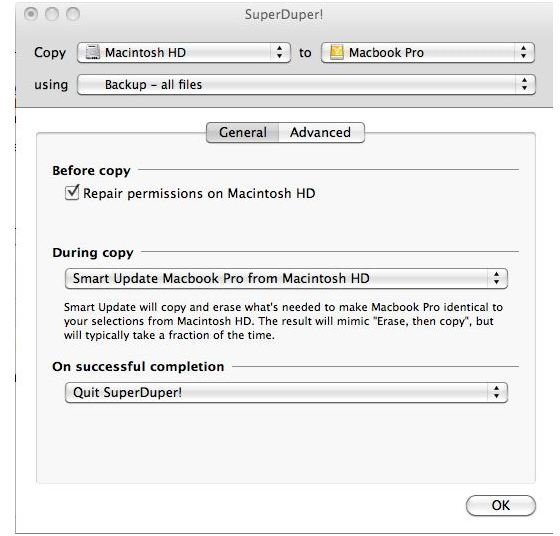
Stop being such a stickler.) Announcing SuperDuper 3.2 B3: a cavalcade of unnoticeable changes! (OK, yeah, I should have used "The Revenge" for B4. We've got more things planned for the future, of course, so thanks for using SuperDuper! - we really appreciate each and every one of you.Įnjoy the new version, and let us know if you have any questions! We just didn't have enough time to finish our Dark Mode implementation, didn't like what we had, and rather than delay things, decided to keep it in the lab for more testing and refinement. We're also supporting Mojave in 3.2 with one small caveat: for the moment, we've opted out of Dark Mode. Whereas before those might fill a drive, now the copy will succeed. This is especially useful for Photographers and others who typically deal with large data files, and who rename or move huge folders of content.

You'll just see (or, rather, not see) fewer failures in more "extreme" copies. So there you go: another completely "invisible" feature that improves SuperDuper! in significant ways that you don't have to think about.or even notice.
#Shirt pocket superduper coupon update#
Smart Update and Smart Delete work hand-in-hand to minimize disk full errors while maximizing speed and safety, with no significant speed penalty. Once we have the space, Smart Delete stops and allows the regular Smart Update to do its thing. But we've finally come up with a idea (and implementation) that works really well.īasically, if we hit a disk full error, we "peek" ahead and clean things up before Smart Update gets there, just enough so it can do what it needs to do. The problem has always been balancing safety with convenience.

This is something we've been thinking about and working on for a while.
#Shirt pocket superduper coupon free#
The downside, though, is a potential for disk full errors when there's not much free space on a drive. So, in an emergency, it's much easier for a data salvaging tool to get the files back. By copying before deleting at a given level, we don't overwrite them with new data as quickly. Well, when users make mistakes, we want to give them the best chance of recovery with a data salvaging tool. In human (as opposed to developer) terms, that means when we're about to leave a folder, we tidy it up, removing anything that shouldn't be there. So, in a depth-first copy, we clean up as we "pop" back up the directory tree. While we don't "leave all the deletions to the end", as some have suggested (usually via a peeved support email), we consciously delete files as late as is practical: what we call "post-traversal". There are some subtleties in the way Smart Update is done that can aggravate this situation - but for a good cause. Recovery typically involved doing an Erase, then copy backup, which took time and was riskier than we'd like. However, there's a small downside to this approach: if your disk is relatively full, and a change is made that could temporarily fill the disk during processing, even though the final result would fit, we're trigger a disk full error, and stop. It does this in one pass for speed and efficiency. Since the SuperDuper!'s first release, we've had Smart Update, which speeds up copying by quickly evaluating a drive on the fly, copying and deleting where appropriate.



 0 kommentar(er)
0 kommentar(er)
